The world’s most common building material has a huge carbon footprint. Angeli Mehta talks to the scientists trying to reduce it
What do root vegetables, graphene and carbon dioxide all have in common? Nothing apart from carbon, you might think. But they all offer the potential to cut carbon dioxide emissions from cement and concrete.
Four billion tonnes of cement are made every year. That’s four billion tonnes of the glue that makes concrete such a cheap, versatile and durable material – in demand for homes and roads, dams and bridges across the globe. Unfortunately those immense quantities mean cement accounts for 8% of global carbon dioxide emissions, and there’s no let-up in demand, as the developing world builds homes and cities for its growing population. Indeed, meeting the UN sustainable development goals means new buildings and infrastructure – just as the world needs to decarbonise, and rapidly.
The basics of the modern cement recipe are largely unchanged over the past 200 years. Limestone (calcium carbonate) is heated with clay at temperatures of 1400–1500°C; the limestone and clay break down into their oxides and then combine into di- and tri-calcium silicates; iron and aluminium from the clay also react with the calcium to produce smaller quantities of tricalcium aluminate, and tetracalcium aluminoferrite.
Cement accounts for 8% of global carbon dioxide emissions
Once cooled, this mixture, called clinker – is ground, and gypsum (calcium sulfate dihydrate) added to improve the future setting of the cement. When water is added, the silicates combine to form calcium silicate hydrate. This is the gel that binds the cement particles together.
Not only are large amounts of energy (from fossil fuels) needed to heat the kilns to such high temperatures, but the breakdown of calcium carbonate itself releases carbon dioxide – accounting for more than half of the emissions associated with making cement. All the other steps of quarrying and transporting the raw materials, cooling and grinding the clinker, and mixing the cement, also produce emissions – about 10% of the total. Producing each kilogram of the most common type of cement – known as Portland cement – is associated with 0.93 kg carbon dioxide emissions. It’s used in 98% of concrete produced globally.
Small steps
‘What’s important to understand is that there are no miracles here – no big potential breakthrough,’ warns Karen Scrivener, a materials chemist who heads up the laboratory of construction materials at the Swiss Federal Institute of Technology in Lausanne. ‘We have to make cement and concrete from earth-abundant materials.’
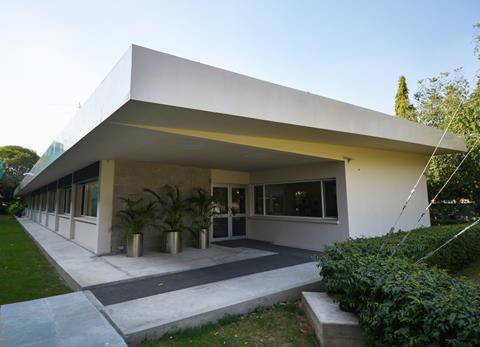
Some of the most abundant are too soluble, some not soluble enough, so what’s left are the goldilocks materials of silica, calcium and alumina (found in bauxite). But there’s not enough alumina to meet demand, even if we stopped using it to make aluminium overnight, says Scrivener.
So the strategies being worked on are to use less fossil fuel to heat the kilns; less clinker to make cement; less cement in the concrete; and less concrete to build infrastructure overall, including more recycling. Scrivener, and her co-authors on a recent report on the sustainability of the cement and concrete industry in Europe, estimate it can get over 80% of the way to zero emissions by using existing technologies, with all players – from cement makers to construction companies – working together. Policy makers would need to implement taxes on demolition and landfill. Adding carbon capture and storage could get the continent over the line.
HeidelbergCement – one of the world’s largest producers – says that since 1990, it’s reduced net carbon dioxide emissions by over 18% to around to 0.6kg for every kilogram of cement it produces. The target now is to get 30% below 1990 levels by 2030.
But the group has already gone a long way in using alternative fuels to avoid carbon dioxide emissions. ‘There’s probably a few percent here and there to optimise – but there’s no silver bullet,’ explains Wolfgang Dienemann, director of global R&D. ‘We have to work on all levels to minimise emissions and then capture the remaining carbon dioxide.’ The group has several promising capture projects underway.
It’s also reducing clinker content in its cements, which now stands at just over 75%. ‘But here the key point is what materials are available and where are they available: transportation and logistics costs are a major factor in our industry. Obviously, you can only use materials at large scale that are locally available,’ says Dienemann.
Substituting with fly ash or steel slag – by-products of coal power and steel making plants – could potentially reduce clinker content to 50%. But fly ash will eventually disappear in Europe as coal-fired power plants are switched off, although there’s no immediate prospect of that in China or India.
Swedish company EMC, which has developed a cement using 50% fly ash and 50% Portland cement, says the fly ash can be replaced by pozzolan (natural or synthetic silicate materials) – and claims an emissions saving of 90%. Magnesium carbonates have also been explored, but their use is very energy intensive and would require serious mining and transportation efforts.
HeidelbergCement’s Ternocem produces 30% less carbon dioxide emissions per tonne
With the backing of the Swiss government, Scrivener and an international team have come up with a cement that can be used in developing countries, with existing manufacturing facilities and no special training for workers. Known as LC3, it uses a mix of limestone and calcined clay, with a potential to reduce emissions by 30%. There are virtually unlimited amounts of low-grade clays around the world: she points out that the Chinese have one quarry site alone with 3 billion tonnes of spoil heaps containing 50% kaolin. In LC3 cement, half of the clinker is replaced by calcined clay (30%), limestone (15%) and gypsum (5%). There’s less of an emissions reduction than that would imply because the clay has to be calcined at temperatures of 700–850°C. The alumina in the clay reacts with the limestone so it’s less porous, and has better chloride resistance than Portland cement, although strength is maintained.
Feasibility studies are underway in 30 countries around the world. Pilots in Cuba and India have produced almost 200 tonnes and demonstrated properties in line with cements produced in the lab. Commercial sensitivities mean Scrivener is tight-lipped about commercialisation, although full-scale production is expected to begin in South America within months, and in Ivory Coast next year. She is confident LC3 has the potential to cut carbon emissions by 400 million tonnes a year – 1% of global emissions.
Less clinker is one thing, but what about the composition of the clinker itself? HeidelbergCement has developed Ternocem – a belite calcium sulfoaluminate ternesite cement that uses alumina (from bauxite) to cut limestone consumption. It produces 30% less carbon dioxide emissions per tonne. The cement has been extensively trialled and is close to market maturity, according to Dienemann. But even that is not a perfect solution: bauxite is expensive, and is the world’s main source of aluminium. Dienemann expects it will have applications where very high strength concrete is required, that have previously used cement with a high clinker component.
Closing the loop
A lot of concrete does get recycled – often on the same site – as new sub-base for buildings and roads. Using recycled construction waste for roads can save almost 80% of the energy that would otherwise be used. But legislation is key: in the Netherlands, there’s a landfill ban on demolition concrete so 95% is recycled. In Portugal, recycling is minimal.
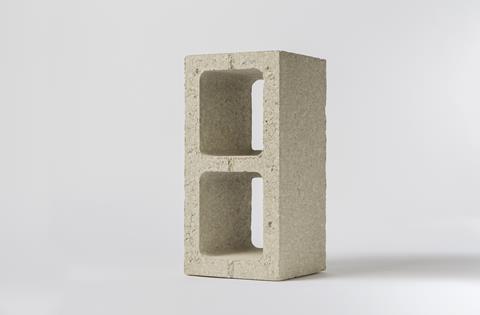
Closing the loop is a challenge – with careful sorting and processing, says Dienemann, the original sand and gravel can be extracted, but the cement paste is a different matter. There are no commercially viable processes to recycle it, although efforts are underway in the lab. But it can be re-carbonated. This happens naturally at the surface of the concrete over time. ‘If you could accelerate that process and convert it back into limestone, that would be a game-changer.’ Normally, adds Dienemann, ‘we’d try to avoid carbonation, to prevent corrosion of steel reinforcements, but we need to think out of the box. Instead of keeping concrete as dense as possible, we’re going in another direction – to increase the surface area.’
Adding carbon dioxide at low levels in pre-cast structures, like paving stones – that don’t need steel reinforcement – actually increases the strength of the concrete. Ultimately the company wants to use carbon dioxide emissions captured from its own manufacturing process to re-carbonate the concrete. ‘We’ve done a lot of research – to the point where it can be applied in mass production, says Dienemann, but the question remains whether it’s economically feasible.
Other companies are also trying to sequester carbon. Solidia, a New Jersey firm, says its cement produces 70% fewer emissions than conventional Portland cement. It is backed by the world’s largest manufacturer, LafargeHolcim, and has demonstrated that its cement can be made at the group’s plants without any factory modifications being needed.
Going negative
In Canada, Mehrdad Mahoutian has also seen the advantages of using carbon dioxide. His PhD project aimed to unearth a replacement for cement – and the solution turned out to be a means to sequester carbon dioxide. Now his Montreal-based company, Carbicrete, is on the verge of taking the process out of the lab.
Its cement substitute is ground steel slag (composed predominantly of di- and tri-calcium silicates), and activated by carbon dioxide. That essentially reverses the conventional cement-making process, creating calcium carbonate. Mahoutian says the resulting concrete is stronger, and testing suggests it resists freezing and thawing better than conventional concrete.
‘Up until 30 years ago, a lot of research on concrete was about strength and durability. Now it’s about making concrete clean: let’s use less cement, use renewable energy, make it at lower temperatures – but we’re still only reducing carbon dioxide by 10–30%,’ says Mahoutian.
Carbicrete’s production captures 1kg of carbon dioxide in each pre-cast concrete block (17–18kg), and avoids a further 1.5kg that would have come from using 2kg of Portland cement. ‘Is it the maximum?’ asks Mahoutian. ‘Potentially not, but we have to consider costs.’
We’re still only reducing carbon dioxide by 10–30%
The technology won the company a place last year in the finals of the $20 million NRG Cosia CarbonX prize, a four-year global competition to discover breakthrough technologies that convert carbon dioxide from power plants into valuable products. But Carbicrete withdrew when it secured $2.1 million from the Canadian government to help it build a pilot facility at an existing concrete plant. That’s expected to begin by the end of the year and eventually produce several thousand blocks a day. Carbicrete has already produced a couple of hundred in the lab.
Mahoutian reckons current steel slag production is enough to cover ‘a good portion’ of precast concrete. In the US, Europe and Japan, reuse rates are already high but Mahoutian is confident the value of his company’s product would mean it would be diverted from other lower value applications, like aggregates for concrete.
Long term, the plan is to capture carbon dioxide from plants close to wherever Carbicrete’s precast is being manufactured. For now, it’s buying carbon dioxide purified from another industrial by-product – still closing the loop. The timing is good. This year Canadian states are introducing a modest carbon tax on industrial emitters, but mandating green concrete standards would be ideal, says Mahoutian.
Built on veg
Mohamed Saafi was looking for a cheap and renewable material that would help cut cement emissions when he learned about a Scottish firm using agricultural waste streams to produce cellulose nanofibres for paint and coatings. Here’s where the root vegetables come in. Cellulose (which gives plant cell walls their strength) can be broken down to create a loose network of nanofibres – ‘akin to a loosely woven cloth with a large surface area’, says Eric Whale, who co-founded Cellucomp. The company’s product, called Curran – Gaelic for carrot, the first vegetable they tried – has also found applications in cardboard packaging and composites.

‘This nanomaterial acts as a kind of reservoir to supply water all the way into the cement so it’s more hydrated – there’s more glue – so the cement is stronger,’ explains Saafi. They found they could use 40kg less cement per cubic metre of concrete than would normally be required. The cements made by Saafi’s team at Lancaster University in the UK were also denser, so any concrete produced would potentially have a longer lifespan and be less susceptible to corrosion.
‘We’re diving into the DNA of the carrots and cement to understand exactly how they interact, to work out the optimal quantities of carrot nanoparticles and cement […] and come up with recipes that will vary according to the requirements of the job.’ Saafi expects that within a year they’ll be able to tell the construction industry what’s required, with UK trials underway by the end of 2020.
Saafi’s research group has tried both carrots and sugar beet: carrots have a slight advantage, he says, but sugar beet is grown extensively from northern Europe to Egypt, Russia and northern China. There’s a huge volume of waste once the sugar is extracted. Whale adds that 6–7 million tonnes of sugar beet pellets are produced in Europe alone, and used to bulk up animal feed, so there’s an existing infrastructure of suppliers and distributors.
Another – much more expensive – material that improves the hydration of cement is graphene. Dimitar Dimov at the University of Exeter in the UK had what he describes as his ‘eureka moment’ sitting in his back garden discussing potential real life applications of graphene. The idea occurred to him that adding graphene to the world’s most used material could make it stronger, so less would be needed.
What he and his colleagues discovered was that adding graphene made concrete twice as strong, improved its flexural strength and made it highly impermeable to water. Graphene, explains Dimov, ‘acts as a bridge between the cement crystals – those crystals grow and interlock mechanically. Graphene leaves less air voids between the crystals.’
Urgency is the key word
They calculate that the addition of 125g of graphene can cut the volume of cement required for a cubic metre of concrete by 50%, which in turn means a 446kg per tonne reduction in carbon emissions. To put that figure in perspective, the World Business Council on Sustainable Development estimated that between 1990 and 2010 net emissions per tonne of cement worldwide fell by around 115kg per tonne – although they have fallen further since.
‘Our technology and patent is on the amount of graphene you use. That might be different for different applications. We found a standard formula that works for normal concrete – but can be tailored for specialist applications – for strength; water permeability; thermal properties,’ explains Monica Craciun, professor of nanoscience and nanotechnology at Exeter.
Their spin-off company, Concrene, aims to ‘connect the dots, linking graphene manufacturers and concrete manufacturers – the concrete world would never approach the graphene world on its own’, says Dimov.
Can it be scaled up? ‘All the concrete blocks I made [in the lab] used tap water: I tried to keep it as close as possible to what happens in the real world,’ adds Dimov. Now Concrene’s partners are doing proof of concept testing, while it looks for local graphene producers that manufacture sustainably.
But the concrete industry is conservative, understandably preferring tried and tested practices to guarantee strength and durability. Will the world have to wait for structures built with concrete exploiting sugarbeet, graphene or carbon dioxide to prove they stand the test of time – or will the Paris climate commitments help drive demand for new standards and regulations?
‘Urgency is the key word,’ says Scrivener. ‘Anything we can do now will mean huge savings in terms of what we have to do later.’
Angeli Mehta is a science writer based in Edinburgh, UK
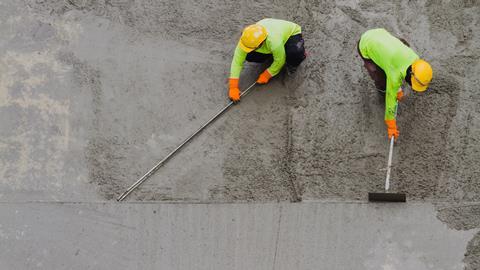
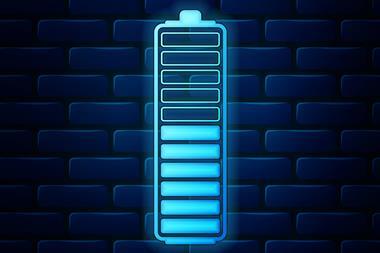
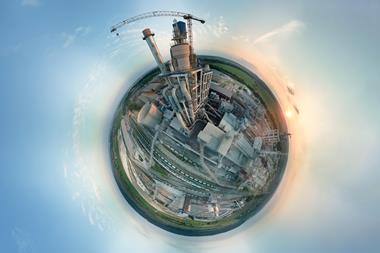

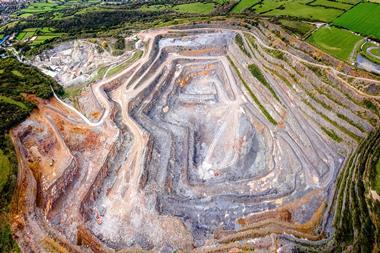
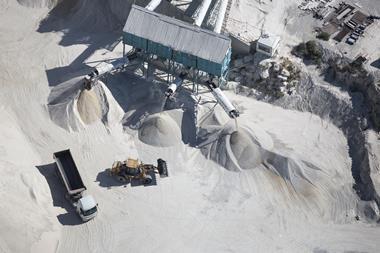







No comments yet